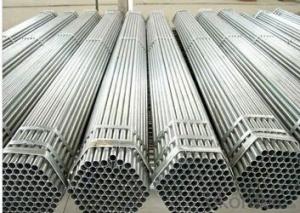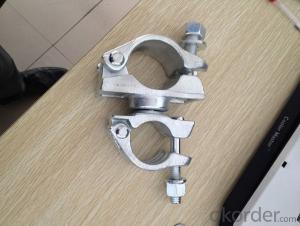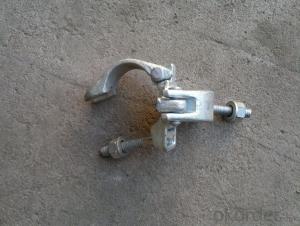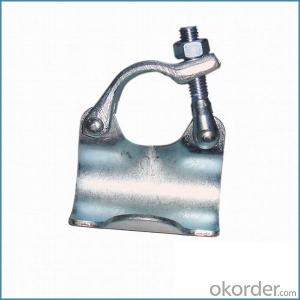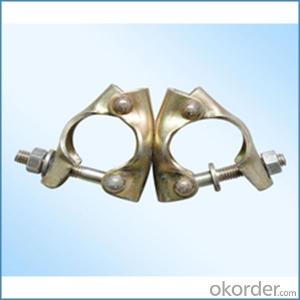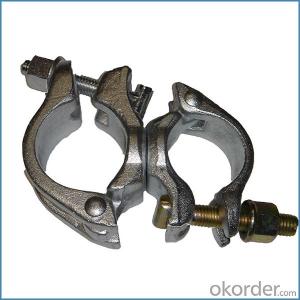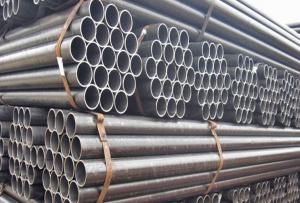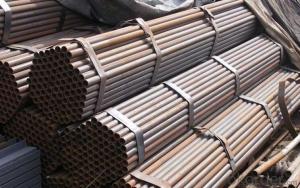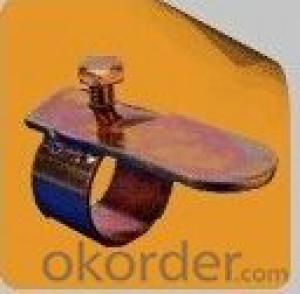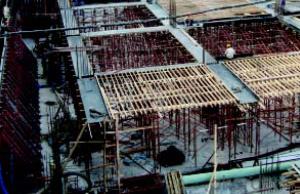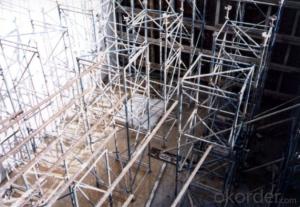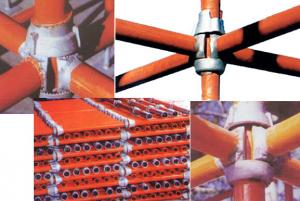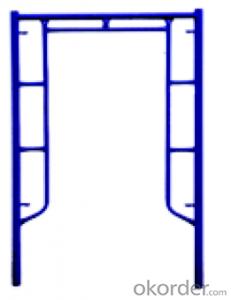Jis Swivel Coupler British Type for Sale
- Loading Port:
- Tianjin
- Payment Terms:
- TT OR LC
- Min Order Qty:
- 1000 kg
- Supply Capability:
- 100000 kg/month
OKorder Service Pledge
OKorder Financial Service
You Might Also Like
Jis Swivel Coupler British Type for Sale
Description
1.The scaffolding coupler is always used to connect the steel pipe as scaffolding system.
2.The often used coupler is swivel coupler and righ angle coupler .
3.We can provide types of scaffolding coupler according to your requirement.
4.Couoler can fix the 48.3mm scaffolding steel pipe tightly and make the whole scaffolding system more steadily.
5.Material:Q235 steel
6.Overall Size:48.3mm*48.3mm
7.Surface Finish: Galvanized/ Painted
8.Standard:BS1139,EN74
9.Package:25pcs/bag
10.Manufactuering as per customer requirements
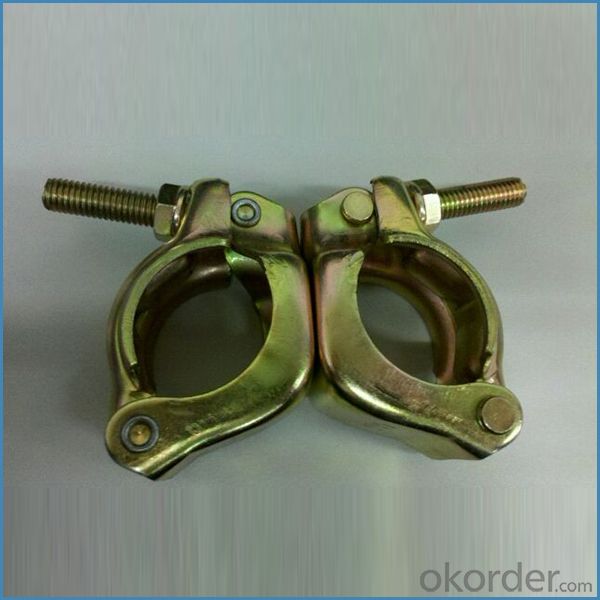
Feature
(1)Excellent Anti-Breaking—Cold Pressed Steel
(2)Outstanding Resistance Deformation
(3)Strong Anti-Dropping Ability
(4)Longtime USe
(5)Qualtity Guaranteed
(6)OEM Service
Photo
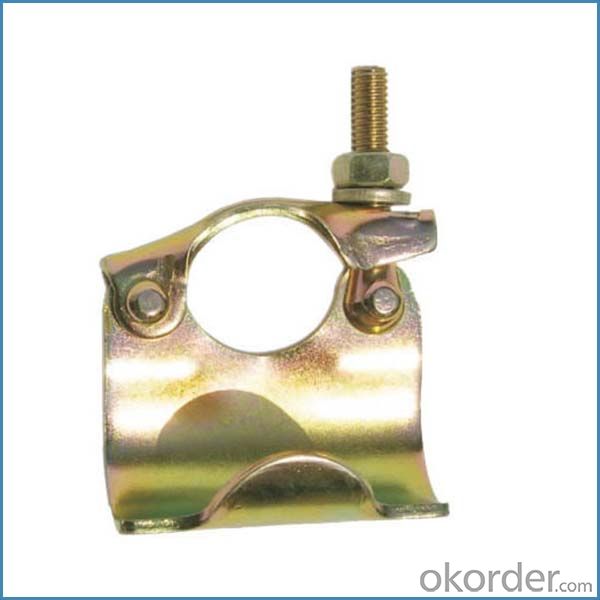
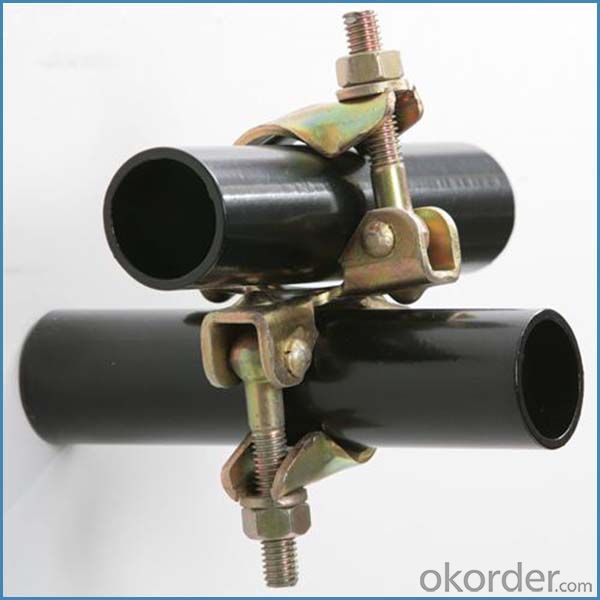
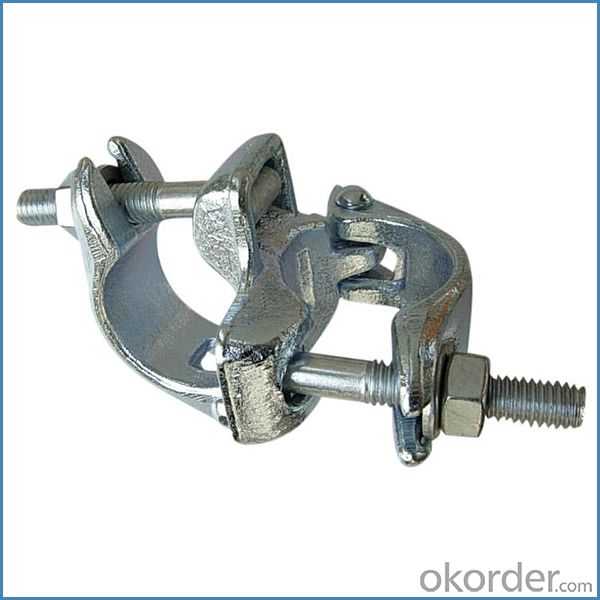
Parameter
| Material | Q235,345steel |
| Size | 48.3mm*48.3mm |
| Surface finish | Galvanized |
| Weight | 1.1kg around |
| Standard | BS1139,EN74 |
| Package | 25pcs/bag,steel pallet |
| Manufacture | As per customer requirement |
| Market | Africa, South America, the Middle East and Asia |
FAQ
Q: Are you a factory or trading company?
We are a state-owned corporation in China,dealing with various kinds of building materials.We have our holding subsidiaries.
Q: Where is your factory located? How can I visit there?
Our factory is located all around China.
Q: Can I get some samples?
Sample is free, customer only pay freight for the first time.
Q: Delivery?
10-30days. (5-15 containers)
Any question,feel free to contact us.
- Q:Are steel tube couplers compatible with different types of scaffolding boards or platforms?
- Yes, steel tube couplers are compatible with different types of scaffolding boards or platforms. These couplers are versatile and can be used with various sizes and types of boards, providing a secure and stable connection for scaffolding structures.
- Q:Can steel tube couplers be used in scaffolding projects with limited access to power tools?
- Yes, steel tube couplers can be used in scaffolding projects with limited access to power tools. Steel tube couplers are typically designed to be easily assembled and disassembled by hand, making them suitable for projects where power tools may not be available or practical to use.
- Q:Are steel tube couplers suitable for scaffolding projects with high vibration or dynamic loads?
- Steel tube couplers are generally not suitable for scaffolding projects with high vibration or dynamic loads. While steel tube couplers are commonly used in scaffolding due to their versatility and ease of installation, they may not provide the necessary stability and strength required for applications with high levels of vibration or dynamic loads. When subjected to high levels of vibration or dynamic loads, steel tube couplers may experience fatigue and stress-related issues, leading to potential failure and compromised safety. The repeated movement and stress on the couplers can cause them to weaken over time, jeopardizing the integrity of the entire scaffolding structure. In situations with high vibration or dynamic loads, alternative scaffolding systems such as cuplock or ringlock scaffolding are often recommended. These systems feature specialized locking mechanisms that provide enhanced stability and resistance to dynamic loads. Additionally, they offer superior load-bearing capacity and can better withstand the impacts caused by vibration or dynamic forces. It is crucial to consult with a professional scaffolding engineer or supplier who can assess the specific requirements of your project and recommend the most suitable scaffolding system. Safety should always be the top priority, and selecting the appropriate scaffolding system ensures the structural integrity and reliability necessary for projects with high vibration or dynamic loads.
- Q:How does a sleeve coupler work in scaffolding?
- A sleeve coupler in scaffolding works by connecting two scaffold tubes together. It consists of two halves with a bolt that passes through them, securing the tubes in place. The sleeve coupler provides a strong and stable connection, ensuring the stability and integrity of the scaffolding structure.
- Q:Providing assessment to identify the students' zones of proximal development Assisting the development of disadvantaged learners with early intervention experiences Providing social experiences for youngsters that reduces egocentricity Providing instructional assistance that allows a learner to proceed through the zone of proximal development
- Assisting the development of disadvantaged learners with early intervention experiences
- Q:Can steel tube couplers be used in scaffolding applications with curved or irregular shapes?
- Steel tube couplers can be used in scaffolding applications with curved or irregular shapes, but it may require additional measures and expertise to ensure proper installation and stability. The primary purpose of steel tube couplers in scaffolding is to connect and secure the tubes together to form a stable structure. While they are commonly used in straight, vertical or horizontal configurations, they can also be utilized for scaffolding structures with curved or irregular shapes. However, when working with curved or irregular shapes, it is important to consider the specific requirements and limitations of the steel tube couplers being used. The design and specifications of the couplers should be assessed to ensure they can accommodate the varying angles and shapes of the scaffolding structure. In some cases, additional components or specialized couplers may be necessary to create the desired curved or irregular shape. These could include swivel couplers, adjustable couplers, or other specialized connectors that allow for flexibility and adjustment. Furthermore, it is crucial to consult with experienced scaffolding professionals or engineers who can provide guidance and expertise in designing and constructing scaffolding systems with curved or irregular shapes. They can analyze the specific requirements of the project and recommend the appropriate couplers and techniques to ensure the stability and safety of the scaffolding structure. Overall, while steel tube couplers can be used in scaffolding applications with curved or irregular shapes, it is essential to carefully consider the specific requirements and seek professional advice to ensure proper installation and structural integrity.
- Q:What safety measures should be taken when working with steel tube couplers in scaffolding?
- When working with steel tube couplers in scaffolding, it is important to take several safety measures to ensure the well-being of workers and prevent accidents. Here are some key safety precautions to consider: 1. Training and Competency: Workers should undergo thorough training and demonstrate competence in working with steel tube couplers. This includes understanding their proper use, installation techniques, and potential hazards associated with scaffolding. 2. Inspection and Maintenance: Regular inspection of steel tube couplers is crucial to identify any signs of wear, damage, or corrosion. Damaged or faulty couplers should be immediately replaced to maintain the overall structural integrity of the scaffolding. 3. Load Capacity: It is essential to understand the load capacity of the steel tube couplers and scaffolding system being used. Overloading can lead to collapse or failure, causing serious injuries or fatalities. Always adhere to the manufacturer's guidelines and consult with a structural engineer if necessary. 4. Secure Connections: Properly connecting the steel tube couplers is vital to maintain stability. Ensure that the couplers are securely tightened and that there is no movement or play in the connections. Loose or improperly secured couplers can lead to accidents or scaffold instability. 5. Fall Protection: Workers must be provided with appropriate fall protection equipment, such as harnesses and lanyards, when working at heights. Additionally, guardrails and toe boards should be installed on scaffolding platforms to prevent falls and provide a safe working environment. 6. Stability and Base Support: Scaffolding should be erected on a stable and level surface. Ensure that the base plates or adjustable jacks are properly positioned and secured to prevent any movement or instability during use. 7. Communication and Signage: Clear communication between workers is essential to avoid accidents. Use appropriate signage, such as warning signs and barricades, to mark areas where scaffolding is in use and to inform others to keep a safe distance. 8. Weather Conditions: Consider the impact of weather conditions on scaffolding stability. High winds, rain, or snow can significantly affect the safety and stability of the scaffolding. Regularly monitor weather forecasts and take appropriate measures to safeguard against adverse conditions. 9. Personal Protective Equipment (PPE): Workers should be provided with and wear appropriate PPE, such as hard hats, safety glasses, gloves, and appropriate footwear, to protect against any potential hazards associated with steel tube couplers. By following these safety measures, workers can minimize the risk of accidents, ensure the structural integrity of scaffolding, and create a safe working environment when using steel tube couplers.
- Q:Are steel tube couplers resistant to corrosion and weathering?
- Yes, steel tube couplers are resistant to corrosion and weathering due to their protective coatings or galvanized finishes. These coatings provide a barrier against moisture, oxidation, and other environmental elements, ensuring the longevity and durability of the couplers.
- Q:How do steel tube couplers ensure the levelness and alignment of scaffolding platforms?
- Steel tube couplers ensure the levelness and alignment of scaffolding platforms by securely connecting the tubes together at right angles. These couplers are designed to provide a strong and stable connection, preventing any movement or shifting of the tubes. This ensures that the platforms remain level and aligned, providing a safe working surface for workers on the scaffolding.
- Q:What are the potential drawbacks or limitations of using steel tube couplers in scaffolding?
- There are several potential drawbacks or limitations of using steel tube couplers in scaffolding. Firstly, steel tube couplers can be quite heavy and bulky, which can make the assembly and disassembly of scaffolding more labor-intensive and time-consuming. This can result in increased installation and dismantling costs, as well as longer project timelines. Secondly, steel tube couplers require skilled labor to properly assemble and dismantle scaffolding structures. Improper installation can lead to safety hazards and compromised stability of the scaffolding system. This means that additional training and expertise are necessary, which can add to the overall costs of using steel tube couplers. Another limitation is that steel tube couplers have limited adjustability. Once they are tightened, it can be challenging to make small adjustments or modifications to the scaffolding structure. This lack of flexibility can be inconvenient and time-consuming, especially when working in complex or irregular spaces. Moreover, steel tube couplers are susceptible to corrosion and rusting over time. Exposure to harsh weather conditions or moisture can lead to the deterioration of the couplers, affecting their strength and structural integrity. Regular inspections, maintenance, and potential replacement of corroded couplers may be necessary, adding to the maintenance costs and overall inconvenience. Lastly, steel tube couplers can be more expensive compared to alternative scaffolding systems, such as modular scaffolding or aluminum towers. The cost of purchasing or renting the couplers, along with the additional labor and maintenance expenses, can be a significant investment for construction projects. In summary, while steel tube couplers are commonly used in scaffolding due to their strength and durability, they have certain drawbacks and limitations. These include their weight, the need for skilled labor, limited adjustability, susceptibility to corrosion, and higher costs compared to other scaffolding systems.
1. Manufacturer Overview |
|
|---|---|
| Location | |
| Year Established | |
| Annual Output Value | |
| Main Markets | |
| Company Certifications | |
2. Manufacturer Certificates |
|
|---|---|
| a) Certification Name | |
| Range | |
| Reference | |
| Validity Period | |
3. Manufacturer Capability |
|
|---|---|
| a)Trade Capacity | |
| Nearest Port | |
| Export Percentage | |
| No.of Employees in Trade Department | |
| Language Spoken: | |
| b)Factory Information | |
| Factory Size: | |
| No. of Production Lines | |
| Contract Manufacturing | |
| Product Price Range | |
Send your message to us
Jis Swivel Coupler British Type for Sale
- Loading Port:
- Tianjin
- Payment Terms:
- TT OR LC
- Min Order Qty:
- 1000 kg
- Supply Capability:
- 100000 kg/month
OKorder Service Pledge
OKorder Financial Service
Similar products
New products
Hot products
Related keywords





